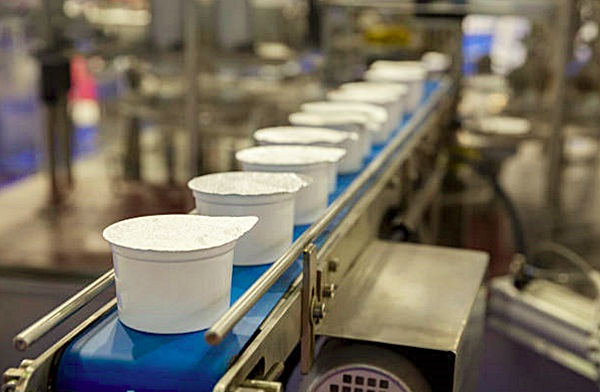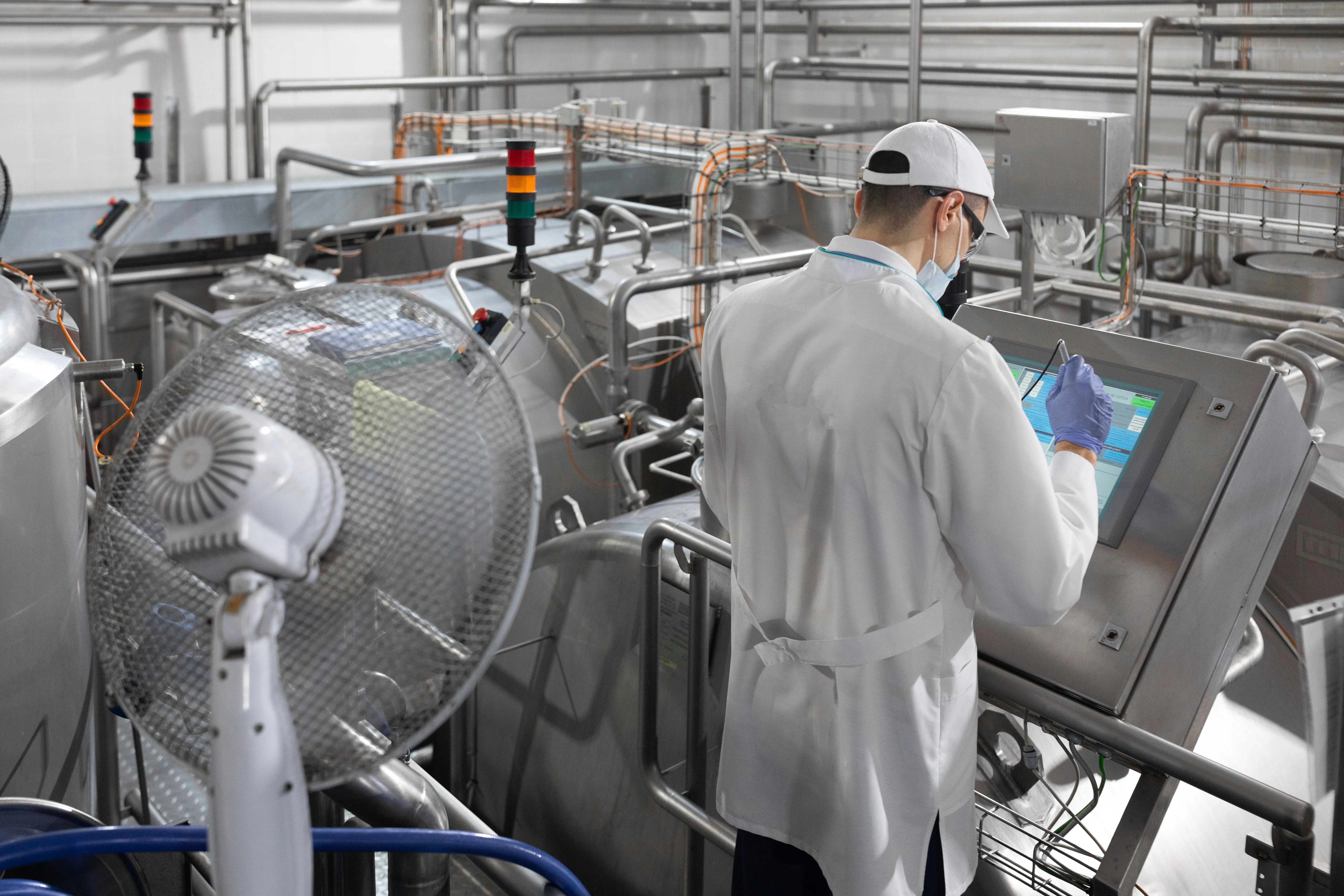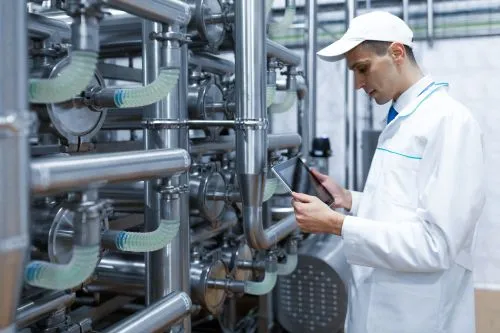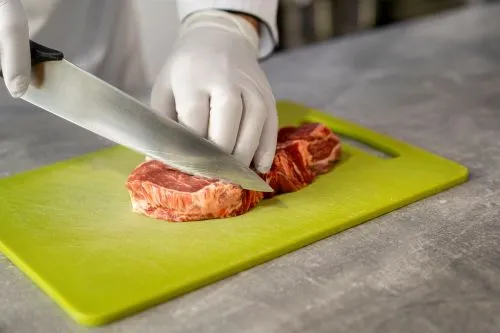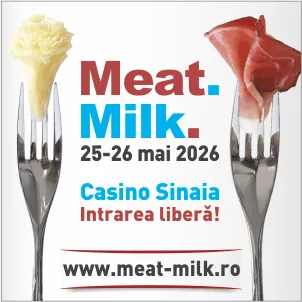1428
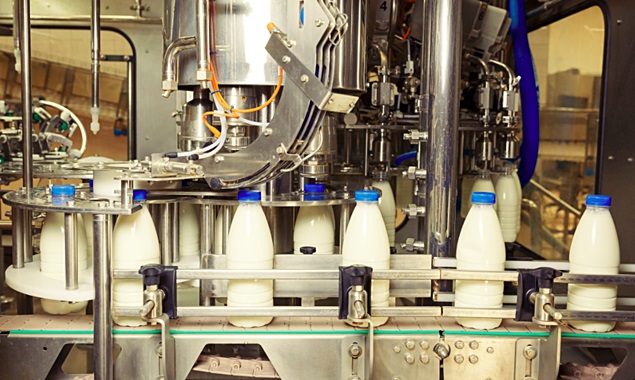
The Romanian company Romfracht, the official representative of Realco in Romania—one of the leading manufacturers of industrial enzymatic detergents—will participate as a Gold Partner at the 14th edition of the Meat. Milk. Expo-Conference, which will take place on May 26-27, 2025, at Hotel Alpin in Poiana Brașov.
On this occasion, Romfracht will showcase its range of products and services at its booth in the Expo area. Additionally, company representatives will deliver a presentation during the General Session on May 26. Below is an excerpt of the company’s key concerns, as presented by Romfracht:
Hygiene in the Dairy Industry: How Enzymatic Technology is Changing the Game
Did you know that 60% of foodborne illnesses result from the transfer of microorganisms from equipment surfaces to the final product?
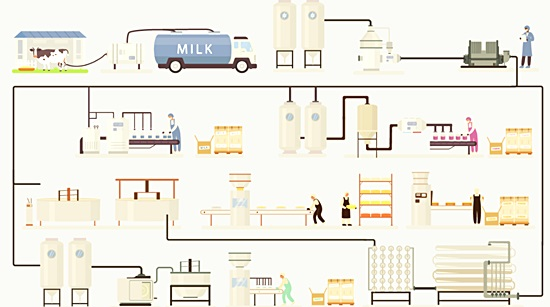
In the dairy industry, where the risk of contamination is a constant challenge, traditional cleaning methods are not always sufficient.
When protected by a biofilm, microorganisms can be 10 to 1,000 times more resistant to disinfectants[2].
This is where enzymatic technology comes in—an innovative solution that completely removes biofilms while protecting equipment and reducing environmental impact.
Why is biofilm a major problem in dairy processing?
The dairy industry provides ideal conditions for microorganism growth. Without rigorous hygiene control, these microorganisms can form protective biofilms, leading to persistent, hard-to-detect contamination and posing significant food safety risks.
The main microorganisms and viruses associated with biofilm formation in dairy processing facilities include:
- Bacillus sp.
- Staphylococcus aureus
- Pseudomonas sp.
- Clostridium sp.
- Candida
- Coliforms
- Bacteriophages (viruses that infect bacteria)
If a microorganism is present in the production environment, there is a 70% chance it will also be found in the final product. More than 90% of bacteria are capable of forming biofilms[3].
Other hygiene challenges in dairy processing
- Residue buildup: Proteins, fats, and minerals from milk form stubborn layers on equipment, fostering microorganism growth.
- Cross-contamination: Raw materials, equipment, and personnel can transfer microorganisms from one area to another, compromising product safety.
- Equipment efficiency: Residue buildup reduces the performance of equipment such as pasteurizers.
How can biofilms be effectively removed? A comparison of methods
Traditional cleaning methods:
- Require high temperatures and significant energy consumption.
- Use harsh chemicals that can damage equipment.
- Do not completely eliminate biofilms, leading to recurring contamination issues.
Enzymatic cleaning:
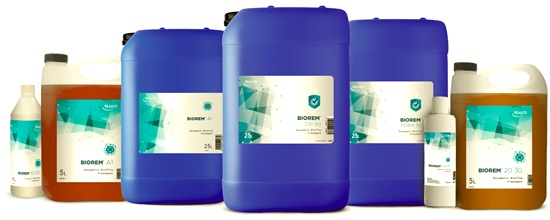
The Romanian company Romfracht, the official representative of Realco in Romania—one of the leading manufacturers of industrial enzymatic detergents—will participate as a Gold Partner at the 14th edition of the Meat. Milk. Expo-Conference, taking place on May 26-27, 2025, at Hotel Alpin in Poiana Brașov.
On this occasion, Romfracht will showcase its range of products and services at its booth in the Expo area. Additionally, company representatives will deliver a presentation during the General Session on May 26. Below is an overview of the company’s key concerns, as presented by Romfracht:
Hygiene in the Dairy Industry: How Enzymatic Technology is Changing the Game
Did you know that 60% of foodborne illnesses result from the transfer of microorganisms from equipment surfaces to the final product[1]?
In the dairy industry, where the risk of contamination is a constant challenge, traditional cleaning methods are not always sufficient.
When protected by a biofilm, microorganisms can be 10 to 1,000 times more resistant to disinfectants[2].
This is where enzymatic technology comes in—an innovative solution that completely removes biofilms while protecting equipment and reducing environmental impact.
Why is Biofilm a Major Problem in Dairy Processing?
The dairy industry provides ideal conditions for microorganism growth. Without rigorous hygiene control, these microorganisms can form protective biofilms, leading to persistent, hard-to-detect contamination and posing significant food safety risks.
The main microorganisms and viruses associated with biofilm formation in dairy processing facilities include:
- Bacillus sp.
- Staphylococcus aureus
- Pseudomonas sp.
- Clostridium sp.
- Candida
- Coliforms
- Bacteriophages (viruses that infect bacteria)
If a microorganism is present in the production environment, there is a 70% chance it will also be found in the final product. More than 90% of bacteria are capable of forming biofilms[3].
Other Hygiene Challenges in Dairy Processing
- Residue buildup: Proteins, fats, and minerals from milk form stubborn layers on equipment, fostering microorganism growth.
- Cross-contamination: Raw materials, equipment, and personnel can transfer microorganisms from one area to another, compromising product safety.
- Equipment efficiency: Residue buildup reduces the performance of equipment such as pasteurizers.
How Can Biofilms Be Effectively Removed? Comparing Methods
Traditional Cleaning Methods:
- Require high temperatures and significant energy consumption.
- Use harsh chemicals that can damage equipment.
- Do not completely eliminate biofilms, leading to recurring contamination issues.
Enzymatic Cleaning:
- Works at lower temperatures, saving energy.
- Breaks down biofilm at a molecular level, completely removing organic residues.
- Is biodegradable, reducing environmental impact.
- Improves equipment efficiency by preventing residue buildup.
The Enzymatic Solution: Proven Industry Results
A concrete example comes from a goat milk processing plant in Belgium, which faced losses due to contamination. After implementing an enzymatic cleaning protocol, the results were remarkable:
Pasteurizer efficiency increased by 18%
"Thanks to Realco products, we improved the efficiency of our pasteurizer by 18%." – Testimonial from a Belgian goat milk processing plant.
Effective Cleaning for Every Stage of Production
Choose the right solution from our range of enzymatic detergents, specially designed for cleaning:
- Closed circuits (CIP) – effectively removes organic deposits and biofilms from pipes and tanks.
- Open surfaces (OPC) – eliminates fat, protein, and biofilm residues from surfaces and equipment, maintaining high hygiene standards.
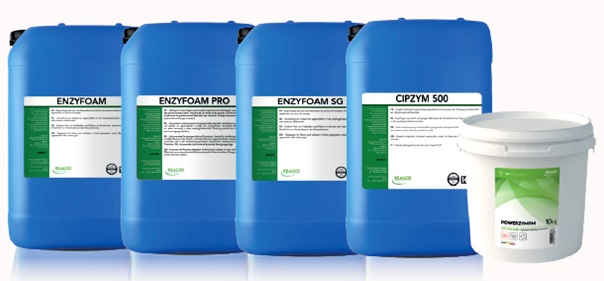
A Step Forward in Food Safety
Regular enzymatic cleaning, combined with targeted enzymatic treatments for biofilms, enables:
✔ Efficient removal of biofilms and fat and protein deposits[4]. ✔ Optimization of equipment efficiency (pasteurizers, UHT systems, etc.) by eliminating buildup. ✔ Extended equipment lifespan by reducing wear caused by harsh chemicals. ✔ Lower contamination risks through improved hygiene control. ✔ Better microbiological test results, ensuring compliance with industry standards. ✔ Improved product shelf life by minimizing microbial contamination. ✔ Enhanced aseptic process control, leading to safer food production.
Want to discover how enzymatic technology can revolutionize hygiene in your production facility?
Contact us at https://romfracht.com/ro/enzymes/ for a free consultation!
References: ([1] Bridier, A., Sanchez-Vizuete, P., Guilbaud, M., Piard, J.-C., Naïtali, M., & Briandet, R. (2015). Biofilm-associated persistence of food-borne pathogens. Food Microbiology, 45(Pt B), 167–178. PubMed;
[2] Shakeri, S., Kermanshahi, R. K., Moghaddam, M. M., & Emtiazi, G. (2007). Assessment of biofilm cell removal and killing and biocide efficacy using the microtiter plate test. Biofouling, 23(1–2), 79–86. DOI;
[3] Richards, J. J., & Melander, C. (2009). Controlling Bacterial Biofilms. ChemBioChem, 10(14), 2287–2294. DOI;
[4] Bridier et al., 2015; Delhalle et al., 2020; Lefebvre et al., 2016; Lequette et al., 2010; Nagaraj et al., 2017; Oulahal et al., 2007; Stiefel et al., 2016; Tsiaprazi-Stamou et al., 2019. DOI
